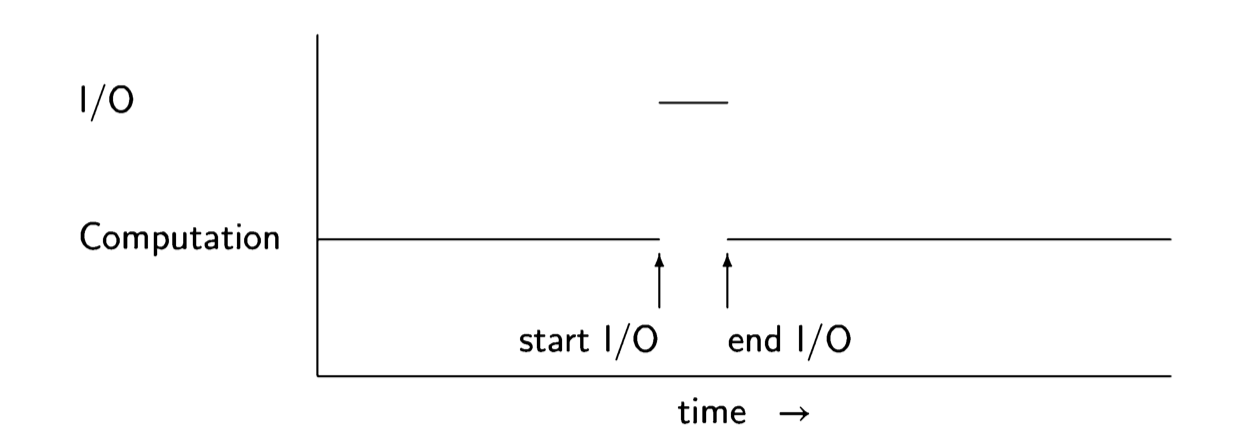Concurrency as abstract parallelism
It is difficult to intuitively grasp the speed of electronic devices. The fingers of a fast typist seem to fly across the keyboard, to say nothing of the impression of speed given by a printer that is capable of producing a page with thousands of characters every few seconds. Yet these rates are extremely slow compared to the time required by a computer to process each character.
As I write, the clock speed of the central processing unit (CPU) of a personal computer is of the order of magnitude of one gigahertz (one billion times a second). That is, every nanosecond (one-billionth of a second), the hardware clock ticks and the circuitry of the CPU performs some operation. Let us roughly estimate that it takes ten clock ticks to execute one machine language instruction, and ten instructions to process a character, so the computer can process the character you typed in one hundred nanoseconds, that is 0.0000001 of a second:

To get an intuitive idea of how much effort is required on the part of the CPU, let us pretend that we are processing the character by hand. Clearly, we do not consciously perform operations on the scale of nanoseconds, so we will multiply the time scale by one billion so that every clock tick becomes a second:

Thus we need to perform 100 seconds of work out of every billion seconds. How much is a billion seconds? Since there are 60 x 60 x 24 = 86,400 seconds in a day, a billion seconds is 1,000,000,000/86,400 = 11,574 days or about 32 years. You would have to invest 100 seconds every 32 years to process a character, and a 3,000-character page would require only (3,000 x 100)/(60 x 60) ~ 83 hours over half a lifetime. This is hardly a strenuous job!
The tremendous gap between the speeds of human and mechanical processing on the one hand and the speed of electronic devices on the other led to the develop- ment of operating systems which allow I/O operations to proceed “in parallel” with computation. On a single CPU, like the one in a personal computer, the processing required for each character typed on a keyboard cannot really be done in parallel with another computation, but it is possible to “steal” from the other computation the fraction of a microsecond needed to process the character. As can be seen from the numbers in the previous paragraph, the degradation in performance will not be noticeable, even when the overhead of switching between the two computations is included.
What is the connection between concurrency and operating systems that overlap I/O with other computations? It would theoretically be possible for every program to include code that would periodically sample the keyboard and the printer to see if they need to be serviced, but this would be an intolerable burden on programmers by forcing them to be fully conversant with the details of the operating system. In- stead, I/O devices are designed to interrupt the CPU, causing it to jump to the code to process a character. Although the processing is sequential, it is conceptually simpler to work with an abstraction in which the I/O processing performed as the result of the interrupt is a separate process, executed concurrently with a process doing another computation. The following diagram shows the assignment of the CPU to the two processes for computation and I/O.
